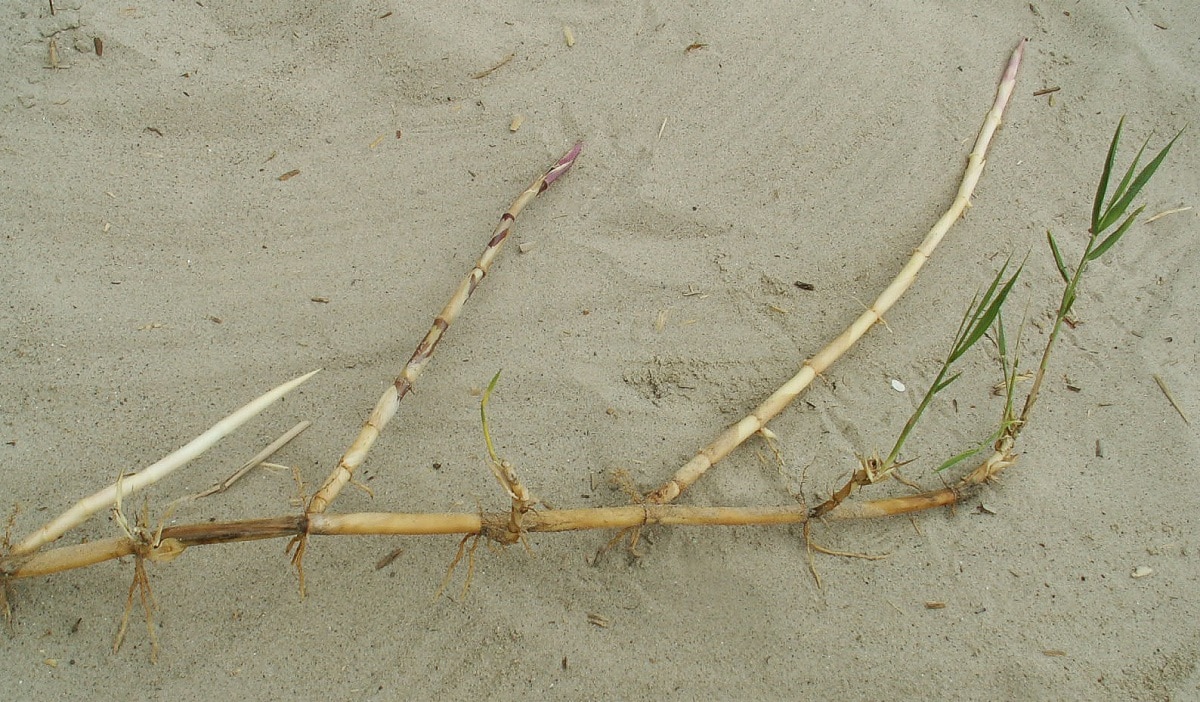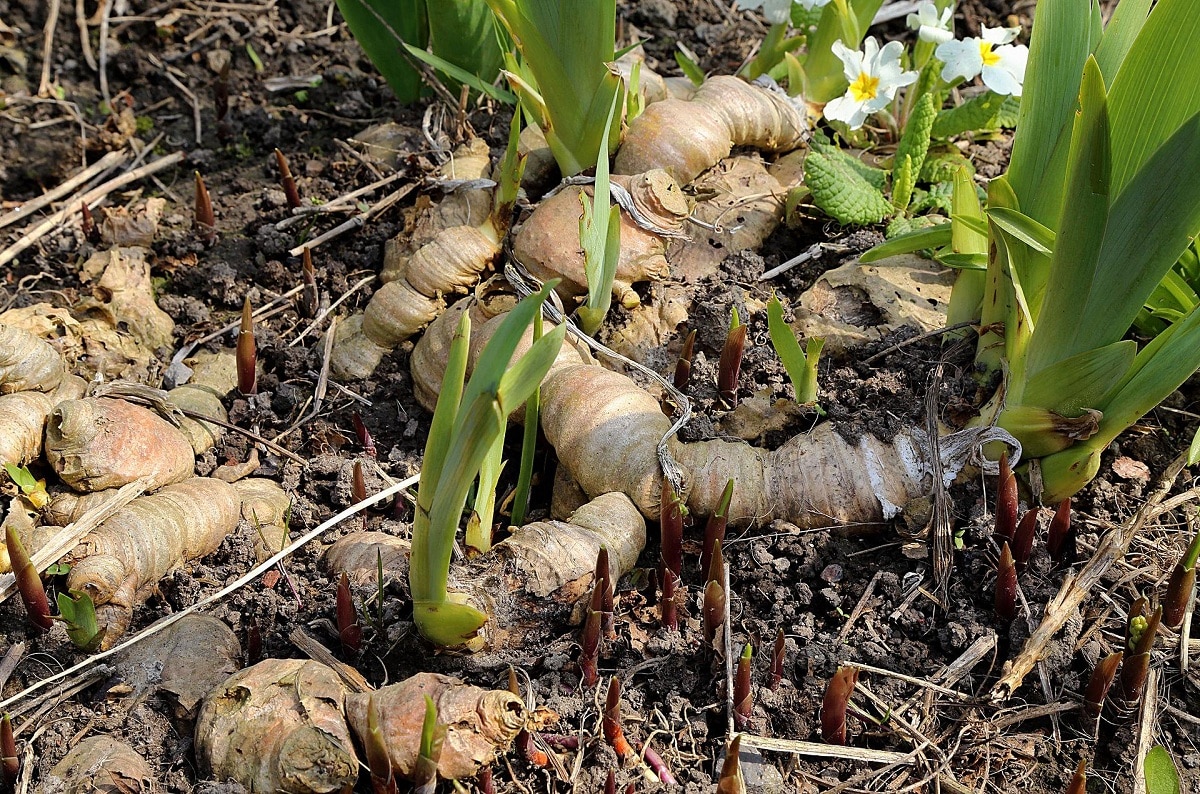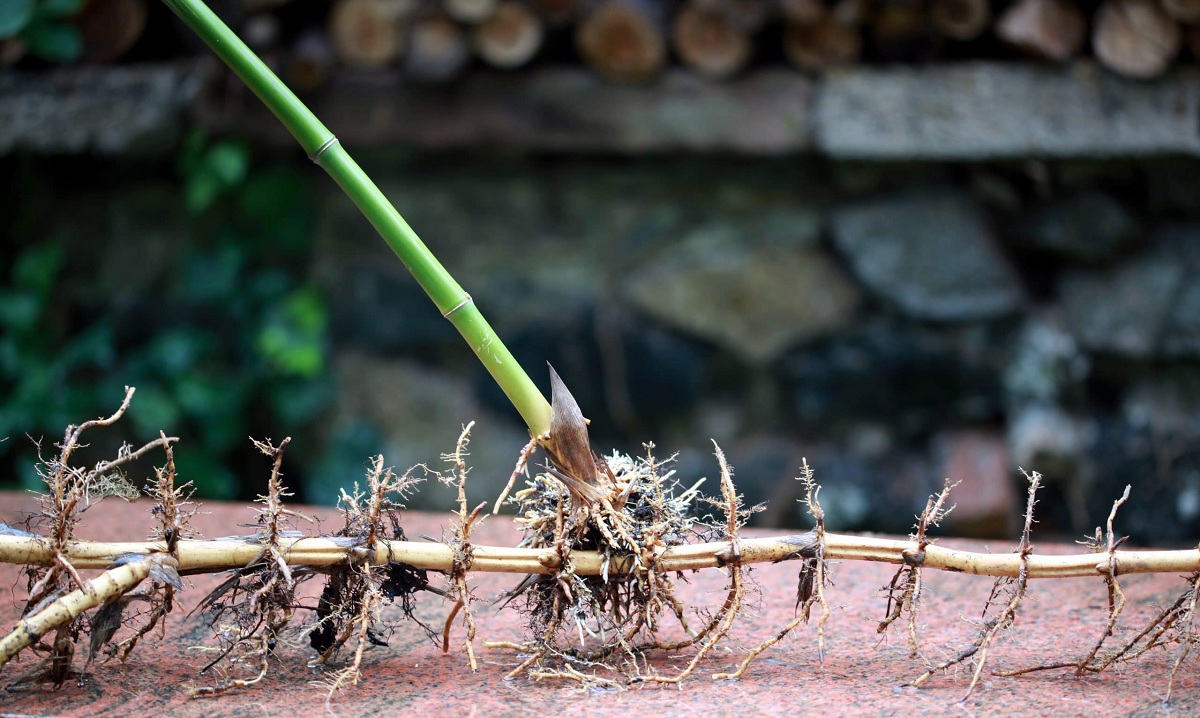
Have you heard of rhizomatous plants? These are a very special type of plant life: their root system has the quality of being able to continue feeding them even at the worst times of the year. And all thanks to the rhizome.
Let's see what is the rhizome, the types there are and how they are planted so you can identify them and know more about them.
What is the rhizome?

When we go on to study plants we must understand what the basic parts of it are. We know that roots, stems, and leaves exist as the main parts of a plant. However, there are different types and structures that exist of plants and of which there is not such a precise idea. Normally the stems are vertical and grow into branches that end up in leaves. While this is true, the stems can also grow horizontally. This is what we call a rhizome.
The rhizome it is a stem that is below ground level that grows horizontally, emitting roots that will go downwards and shoots that will come out from the nodes upwards. Over time, the oldest parts die, but every year new shoots appear that will not only ensure the survival of the plant, but also help to invade other areas. All plants need to reserve certain nutrients when environmental conditions become somewhat more extreme or there is a shortage of nutrients.
Among the main characteristics of rhizomes we find that of a horizontal growth. The ability to grow horizontally gives the plant the advantage that it can support the plant just like a root. Plants that have rhizomes are usually evergreen and only lose leaves to be replaced by others. Thanks to this type of growth, the surface of the plant can be somewhat more resistant to low temperatures during the coldest months. This is because in this type of horizontally growing stems they can store and conserve the nutrients they need in good condition.
Growth and reproduction

Let's see how these stems grow and reproduce. We know that the rhizomes can cover large areas of land. The growth can become indefinite as long as the environmental conditions and the nutrients it needs are sufficient to continue expanding. When the shoots are older and were from a plant that has been separated by a dead zone, they were considered to divide into two different plants.
This means that the reproduction of the rhizomes is asexual. Starting from a single fragment of a rhizome, as long as it has a bud, you can create new shoots and roots with new plants. All this makes the rhizomes have an interesting technical application for the transplantation of plants in the world of gardening.
Once we sow the rhizome, the nutrients are stored to be used later to develop the new individual. Managing the division and planting of rhizomes is often a key role for success in many plantations. We must take into account the time of year and the environmental conditions in which we must plant the rhizome. They should be the most favorable for you to store the nutrients. These times of the year are usually spring, summer and part of the fall.
Rhizome types

There are different types of rhizomes depending on the type of branching and growth that each one of them present:
- Defined or sympathetic: the growth of this type of stems is defined, which means that the original plant can die when others appear too close to it. And is that this type of simplex tend to have various short and thick knots that, in turn, are capable of storing a large amount of nutrients.
- Indefinite or monopodial: they are those that have an indefinite growth since the original plant never dies. These rhizomes are capable of giving rise to a large number of new plants. They are mainly characterized by having more elongated knots and they generate new knots continuously.
What are rhizomatous plants?
Rhizomatous plants are those plants that have evolved to develop a rhizome, which is an organ that acts as a "store" or "reserve" of water. There are numerous plants other than ginger that reproduce through rhizomes. All or almost all of these plants are perennials. Many of them can be found in gardens, such as these:
- Ginger: It is one of the plants that has a rhizome and is one of the most popular. And it is that it has various uses and properties and a great nutritional value. See file.
- Gram: It is a plant that is known by the name of white grasses and the rhizome is delicate and elongated. See file.
- Indian cane: this type of species native to tropical climates and needs a lot of care to grow and maintain itself. Despite having a rhizome, it is somewhat weaker. See file.
- Mint: regrets that it is used in many products, it is nothing more than a plant that has rhizomes and is valued for having good properties and a great smell. The peculiar taste of regret is perhaps the most popular characteristic of this plant. See file.
- Lily: There are some common and famous plants such as the lily that has some type of stem such as the rhizome. Thanks to this characteristic they can survive in extreme temperatures. See file.
- Seal of Solomon: It is a plant that has tubular flowers and they have a white color. The existence of rhizome is essential so that it can provide all the amount of nutrients it needs to grow.
- Bamboo: it is one of the most famous exotic species in the world. Its impact on the world of gardening and other more prominent uses are born as a result of the rhizomes. Among the best known uses of bamboo is to create barriers that serve as separation, protection and greater privacy in our homes. See file.
I hope that with this information you can learn more about rhizomes and their characteristics.
Good afternoon, what a great job.
Question I am building a bio leaked and would like your opinion about water plants, in advance thank you very much.
Hello Raul.
It may interest you this article on oxygenating plants.
A greeting.